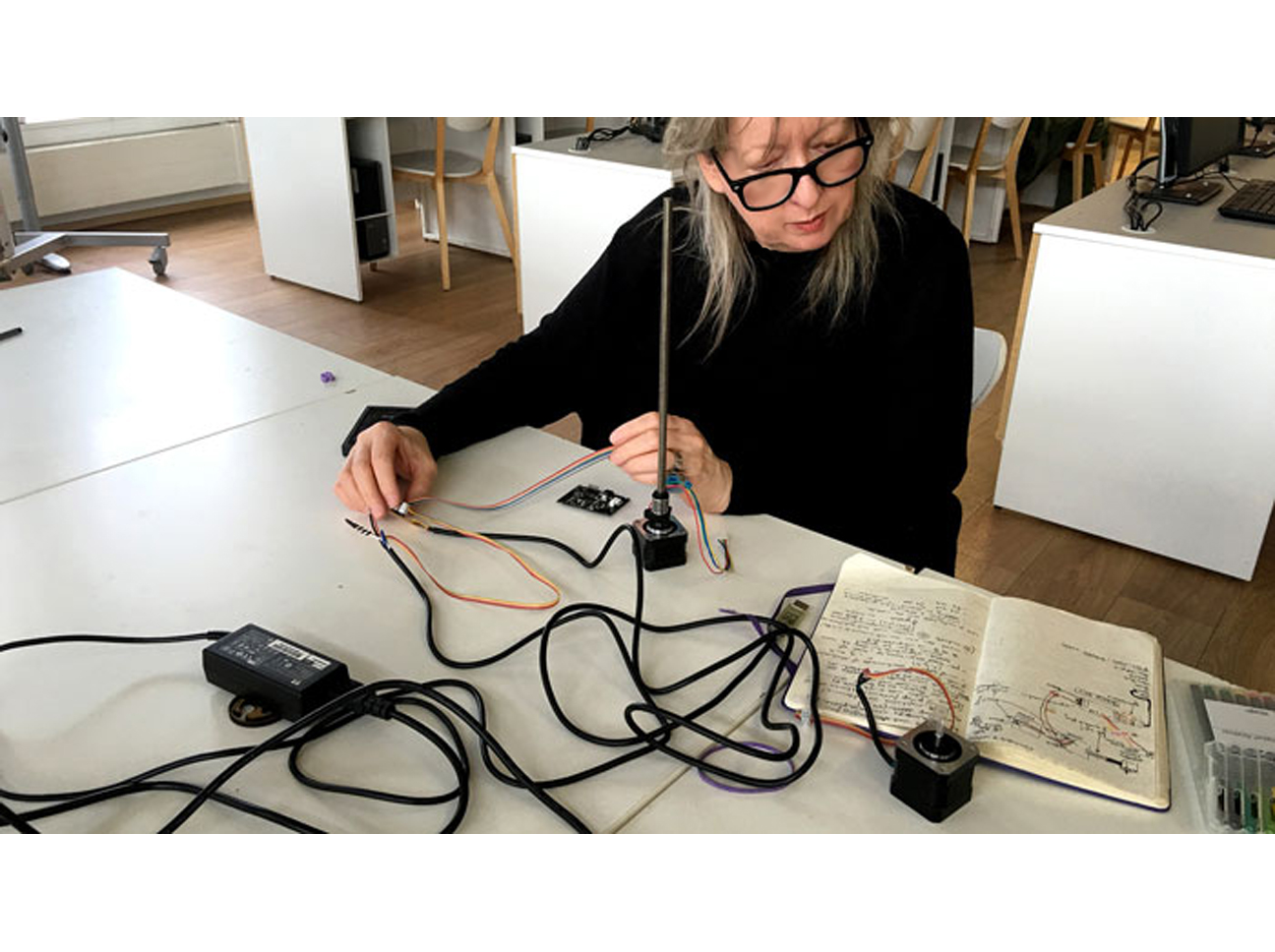
2
The nodes and other hardware we used was an inheritance of the previous year. Since getting the right cables is often an issue in Iceland, apparantly last year's Fab Academy students made one as per the Icelandic "quick and dirty" design: primitive, sometimes dangerous, but it works. This time there was a really weird wire attached to the power supply, that didn't make any sense to me at first. Thanks to my notes and information online at the MTM site I managed to understand what had to be connected to what.
7
We set up an emergency video call with our local instructor Bas (who wasn't local, but outside the country at that time) to discuss the situation. He advised us to immediately order a new cable from abroad, make a new bridge board as per his design, and try to find the 3rd node of the 2015 class that should be somewhere in the lab.

10
On our group's Machine Building website there is also a video that shows the very basic Mandala the machine could draw (thanks to one of our more Python-fähig group members) when the project was finished. (It also shows the frying of the cable and node, but that part can be skipped!)

11
Post Scriptum: Since the machine that we built basically was an (r,Theta)-plotter and none of us had any experience in writing code for such a machine, we ended up just changing numbers and looking how the machine behaved without knowing what the numbers meant. I hope at a later stage my knowledge of the Python language will be good enough to properly program our Mandala machine as an (r, Theta)-plotter. The machine deserves it!






